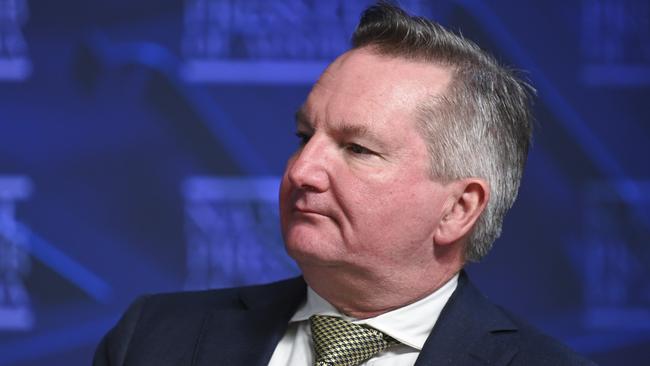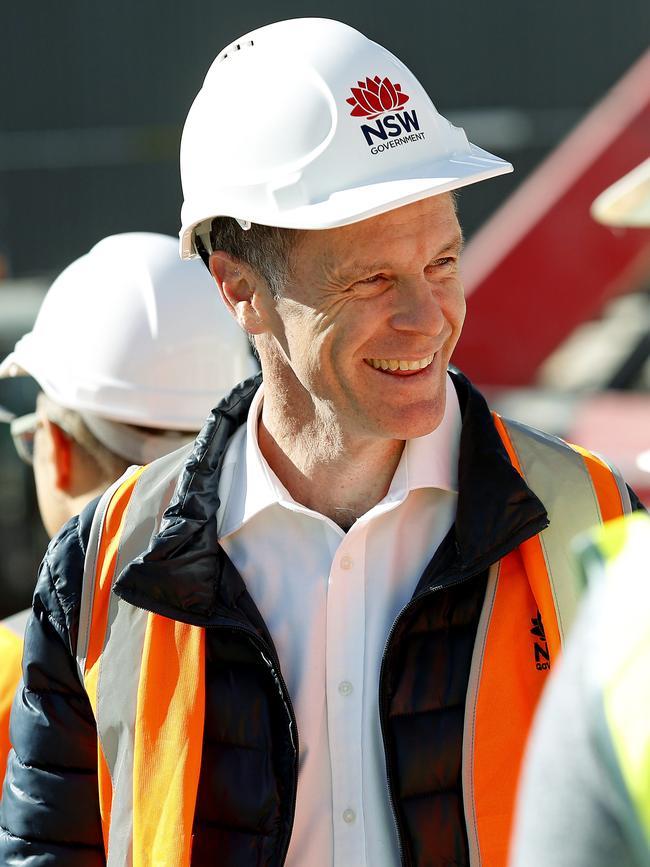
A similar responsibility to keep the lights on now rests with the Albanese government.
It’s concerning that Climate Change and Energy Minister Chris Bowen’s assessment of Eraring was way off the mark when he said: “No one has suggested to me that we need a mechanism to keep Eraring open for anything longer than, at most, a relatively short period of time.”
That’s because the minister’s focus is always on meeting Labor’s 2030 targets at the expense of delivering an orderly transition.
Problems with the transition can no longer be ignored, or wished away, or blamed on others. Bravado, doubling down and more of the same will only compound them.
With 90 per cent of our coal generation closing across the coming decade, the priority of the Albanese government has to be on replacing this lost capacity and averting the lights going out.
Renewables will be part of the mix, but even when firmed they can’t provide the baseload power that’s needed. Gas or nuclear need to part of the equation in the post coal era.

A First World economy can’t run on intermittent renewables alone. Bowen’s description of intermittent, weather-dependent renewables as reliable and “incredibly cheap” is way off the mark. He is still to acknowledge the limitations of the modelling he relies on. It failed to deliver the first promise of a $275 cut in power bills by 2025. It’s the same modelling used for the promised 43 per cent reduction in emissions and 82 per cent renewables by 2030.
The minister’s repeated claim that “there’s no transition without transmission” should be causing serious concern and reflection. He’s right. It’s the delays in transmission that will be the main reason for not meeting the 2030 targets.
Back in 2022 the Australian Energy Market Operator warned that five transmission projects were urgently needed. Two years later, not one project has met planning approval, and when construction begins all will face labour and supply shortages.
HumeLink is one of largest undertakings, with 365km of 500-kilovolt transmission lines connecting with Snowy 2.0. The 850 towers, 50m to 76m in height, require 70m-wide easements in 200m corridors. This will often encroach on productive land and leave residents vulnerable to compulsory acquisition of their property. It’s also a common concern with industrial-sized wind and solar farms.
As with all transmission projects, HumeLink’s costs have blown out from $1.3bn to nearly $5bn, which will be passed on in our electricity bills. The other four urgent projects – VNI West, Sydney Ring, Marinus Link and New England REZ – are listed to be operational from later this decade through to 2031.
Widespread community opposition is extending to proposed offshore wind projects in Labor’s heartland of Illawarra and the Hunter in NSW. The significant loss of social licence, especially in regional Australia, ensures that energy policy and high power prices will be a key issue in the federal election.
Labor’s 82 per cent renewables target requires up to 10,000km of new transmission, and scores of batteries and pumped hydro for storage and firming. Batteries, however, can’t replace lost coal capacity. The much touted Waratah Super Battery, now under construction, will have only two hours of storage capacity.
The battery owner and operator, BlackRock’s Akaysha Energy, will be the major beneficiary of the approved project costs of $700m across six years. As with all big projects these costs will flow through to power bills. There will no reprieve from higher bills.
Snowy 2.0 was to be the major storage backup for the renewables transition. The saga continues with a blowout in costs to $12bn, and upwards of $20bn with the two transmission links. Will it be operational by the end of this decade or turn out to be a white elephant? Snowy Hydro Ltd, wholly owned by the government, is also responsible for the debacle at the Kurri Kurri gas-fired plant. It will now cost the taxpayer $1.4bn for a gas-fired plant that can’t tap into the main gas trunkline and will rely on stored gas in lots of 10 hours, before taking a day to resupply. All the commitments made about hydrogen are another set of broken promises.
The Albanese government would be abrogating its responsibility if it were to decide new targets for 2035 before acknowledging and rectifying current transition problems and the burden of increasing power prices. The government could follow the precedent set in NSW by commissioning an independent “Check Up” that also could provide a whole-of-system costing of the renewables transition.
Credible independent analysis is already predicting Labor’s 2030 targets won’t be met and that power prices will keep rising. A reality check is urgently needed if we’re to avoid a pathway to economic calamity.
Jennie George is a former ACTU president and Labor MP for Throsby.
More Coverage
 He’s right. It’s the delays in transmission that will be the main reason for not meeting the 2030 targets.
He’s right. It’s the delays in transmission that will be the main reason for not meeting the 2030 targets.





The decision by the Minns Labor government in NSW to keep the Eraring coal-fired power station operating for the next two years was a triumph of reality over virtue signalling. It was well received, despite the usual opposition from vested interests.